dadagildaeugene
dadagildaeugene
|
Dada Sound, Music & Movies
1 minute 31 seconds of avant-garde experimental music worth hearing!
The Free Music Archive offers free downloads under Creative Commons and other licenses.
Richard Hamilton died on September 13, 2011. [...] The famous collage he made in 1956, "Just what is it that makes today's homes so different, so appealing?" convincingly establishes his credentials as the father of British -- if not all -- Pop Art. [...] In addition to his own experiments, Hamilton was a lifelong devotee of Marcel Duchamp. [...] Pascal Goblot interviewed and filmed Richard Hamilton several times when making La Légende du Grand verre, a film about Duchamp's The Bride Stripped Bare by her Bachelors, Even, of which Hamilton made a replica for the Tate Gallery in 1966. The DVD is taken from these interviews.
Length: 53 minutes / © 2014 Le Miroir / Vosges Télévisions
BONUS:
Travelling Version
A film by Pascal Goblot
Le Grand verre au Centre Pompidou.
Length: 26 minutes
Just what is it that makes today's home so different, so appealing?
Pop Art's founding collage by Richard Hamilton.
Length: 2 minutes
The White Album: The Beatles
The story of its cover by Richard Hamilton.
Length: 4 minutes
1 DIGIPACK DVD : English version with French-Spanish subtitles / DVD5 PAL / Multizone / 16/9
1 BOOKLET : 44 pages / 12 x 18 cm / texts French-English-Spanish
Date: June 2014
Price TTC : 20,00 euros
Editor's note: Worthwhile purchase! For Duchamp fans, a rather technical film with a most interesting explanation of the Grand verre by Hamilton.
Deutschland Dada (1969) - UbuWeb
This excellent documentary with commentary by Hans Richter who was still alive in 1969, concerns the contributions of German artists to the Dadaist movement. Created in 1916, the organizers rejected previous convention and delighted in nihilistic satire in painting, sculpture and literature. Comparisons are made between the movement and the political and social upheaval at the time of its release.
Credits: Helmut Herbst - Director; Helmut Herbst - Cinematographer; Helmut Herbst - Screenwriter
bada dada > our millenium ending
our crazy millenium ending.
that's our ending ending ending
up till now you've been our bounding,
now you're our millenium ending.
'cos up till now what has been going?
from grass to tree, we have been grazing.
and I boasted from grass to tree,
that Elton John had screwed granny.
and? my millenium ending?
up till now, you've been my standing!
now I'm fucking you unpretending
in the nightstand, as moonshine landing.
'cos we all do know very well,
that it is five past half past nine,
and mineral water will never hose our shit down.
Translated by Mari Falcsik
Vulgar songs and sublime conceptual poetry, alternative rock and phonic poems, body art and visual cabaret, diabolic solos and angelic dada choir, preschooler androgogics and harsh banalities are mixed in the film made in remembrance of the bohemian friend Bada Dada. Joy born from bitterness, beyond penguin-death and squirrel-dreams. No eyes and glasses left dry by the musical docu, revitalising the hearty pearls of this "unbearable idiot" and "redeeming genius". On your feet now, Hungarian dada-garde!
Directed by Triceps vs Gas.
Producer: Zsófia Péterffy.
Director of photography: Gas.
Cutting: Gly.
Poems: Bada Dada.
Music: Jugoszláviai Tudósok, Braaxtaal, Električni orgazam. Starring Bada Dada. Featuring Lj Bianca, Alíz Horák, Juszuf, Ferenc Fehér and the audience of Black-Black Gallery (Budapest).
From: László Lantos
Sent: Wednesday, February 22, 2012
Dada
Video in German by seppkuerbis on YouTube
An excellent video in three parts on YouTube.
Dadaismo
(YouTube) Dadaismo, movimiento antiarte que surgió en Zúrich (Suiza) en 1916 iniciado por Tristan Tzara.
Hecho por: Alvaro Soto Rodriguez
Profesora: Jazmin Rivas
Louis Aragon
(UbuWeb Sound)
Originally from the CD Surrealism Reviewed (LTM Publishing)
Jean Arp
(UbuWeb Sound)
Kaspar Ist Tot (1912) (1:57)
Die Wolkenpumpe (1919) (5:12)
Dada-Sprüche (1955) (3:08)
Aus Dem 'Pyramidenrock' (Opus Null) (1924) (2:04)
Im Autonomobilen Reich (1961) (2:44)
Arabische Sanduhr (1961) (1:17)
Schnurrmilch (1961) (1:34)
Aus 'Weisst Du Schwarzt Du' (1930) (1:03)
Strassburgkonfiguration (1931) (3:33)
Gondel Fahren (1959) (1:07)
Wir Bittsteller Aber (1959) (0:59)
Hinunter Hinunter (1961) (1:03)
Aus 'Auf Verschleierten Schaukeln' (1957) (1:32)
Engel, Sinnende Flammen (1961) (1:54)
Hugo Ball
Phonetic poetry on UbuWeb Sound.
1. Karawane (1916)
2. Wolken (1916)
3. Katzen und Pfauen (1916)
4. Totenklage (1916)
5. Gadji beri bimba (1916)
6. Seepferdchen und Flugfishche (1916)
Performed by Trio Exvoco:
Hanna Aurbacher, Teophil Maier, Ewald Liska from the LP Futura Poesia Sonora (Cramps Records, Milan)
7. Marie Osmond performing Hugo Ball's "Karawane" (:32)
René Clair and Francis Picabia
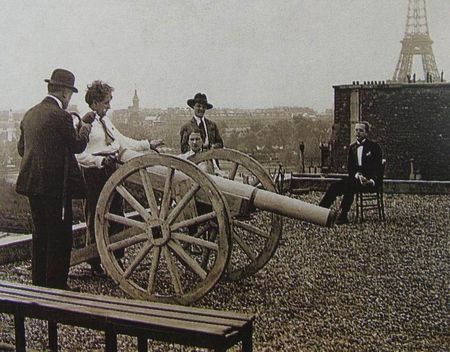
(1924, 22 minutes, 35 mm)

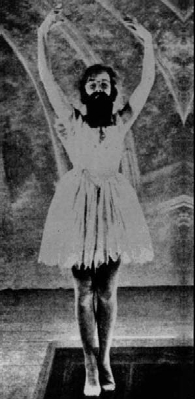
Picabia in Entr'acte
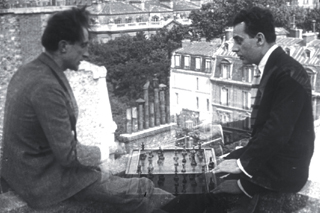
The two fellows playing chess on the roof of the Théâtre des Champs Elysées are Marcel Duchamp and Man Ray.
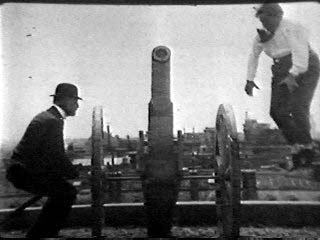
Erik Satie and Francis Picabia in Entr'acte
Arthur Cravan
 Cravan vs. Cravan Cravan vs. Cravan
En 1918, le poète et pugiliste Arthur Cravan, neveu d'Oscar Wilde, disparaît dans le golfe du Mexique sans laisser de traces. Aujourd'hui, un autre boxeur et artiste, le réalisateur Frank Nicotra, mène une enquête qui le conduit sur les pas du mystérieux Arthur Cravan de la Suisse au Mexique, en passant par Paris, Londres et Barcelone, où Cravan disputa un combat légendaire contre le champion du monde des poids lourds Jack Johnson.
DVD en espagnol avec des sous-titres en anglais et et espagnol.
Acteurs : Eduardo Arroyo, María Luisa Borrás, Enrico Casassas, Marcel Fleiss, Bernard Heidsieck
Durée : 100 minutes
Marcel Duchamp
Posted on August 25, 2013
All chess players are artists. -- M. Duchamp
Duchamp stopped painting at a certain point in the 1920's, which was fairly early on in his life, but he didn't stop making art.
Dreams that Money Can Buy is a 1947 film by surrealist/dadaist Hans Richter (1888-1976, a 1912 member of the Blaue Reiter) that includes many artists. This is Duchamp's fragment, with music by John Cage. (As a matter of fact, Richter claims to have made the first abstract film Rhythmus 21 in 1921 and also made the interesting 8 x 8: A Chess Sonata in 8 Movements in 1957.)
Ptak Science Books (with links to several Duchamp movies)
A conversation between Dr. Beth Harris and Dr. Steven Zucker in front of: Marcel Duchamp, Fountain, 1917/1964, porcelain urinal, paint, San Francisco Museum of Modern Art
Video posted on December 16, 2012
Marcel Duchamp Interview (Segment from The Shock of the New, 1980 BBC Documentary)
Posted on July 8, 2012 at 7:49 am in Art, Film
Published April 22, 2012 by Mitchell Williamson.
Work in Progress: Exploring Marcel Duchamp and his Impact on 20th Century Art.
Prepared piano, Juan Hidalgo. A superb recording.
April 11, 2012
From Witch's Cradle on YouTube.
Segment from Making Sense of Modern Art, a guide to modern and contemporary works in SFMOMA's permanent collection. The program's rich-media format enables you to "zoom in" on full-screen details of individual artworks, explore excerpts from archival videos and films, and listen to commentary by artists, art historians, critics, and collectors.
San Francisco Museum of Modern Art
Distant Mirrors (slideshow).
A podcast from the Norton Simon Museum.
This film records an in-depth interview with Duchamp which took place five years before his death, at the time of his first ever one-man show (at the Pasadena Art Museum). It records for posterity Duchamp talking in French about his life, his ideas on art, why he chose to continue living in America after fleeing France in 1915, and why he virtually abandoned his work as an artist in 1923. An engaging dialogue takes place between Duchamp and film-maker Jean-Marie Drot as they go around the Pasadena show, with the artist commenting on the exhibits and using them to explain the various stages of the development of his work. This is punctuated by the games of chess, which were for Duchamp a passion and a metaphor for the mental discipline he applied to his art. In this film we gain a rare glimpse of him talking with humour and insight about his ideas, and living up to the myth of the artist-philosopher that has grown up around him.
Jeu d'échecs avec Marcel Duchamp was filmed late 1963 in Pasadena and New York for the Radio Télévision Française (RTF); first broadcast on 8 June 1964 and then shown at the International Festival of Artistic Films and Films of Art (Bergamo, 19 September 1964). The English version was presented in a television broadcast in September 1964 in the 'Art and Man' Series.
"The goal of chess is to mate. We can thus see this picture as the record of a tableau vivant of a word play. Since Freud, vulgar theorists have held that chess and art, to pick two examples, are sublimations of sex. Given Duchamp's attitude towards wordplay versus theory, it is better to see his life long interest in chess and eroticism as a sublimation of this picture's wordplay! Given that the double meaning of "mate" does not exist in French, at last we have a satisfactory explanation of why Duchamp had to emigrate to America. In other words: in the beginning was the word; in the center the pun."
From: A Pun Among Friends by Steven B. Gerrard
Marcel Duchamp (1963) in UbuWeb Sound
The Creative Act (7:28)
A paper presented to the convention of the American Federation of Arts in Houston, Texas, April 1957
Some Texts from à l'infinitif (4:06)
Written 1912-20. Read in New York, 1967
Erratum musical (1:40)
An Interview by George Heard Hamilton, 1959 (11:04)
An Interview by Richard Hamilton, London 1959 (21:24)
Interview, 1961 (French)
Alain Jouffroy, Marcel Duchamp: rencontre.
Erratum musical (1:40)
by Edward Trammell
A short video created for an architecture film seminar, focused on the work of and with the voice of Marcel Duchamp.
Duchamp, Man Ray, Picabia MNAC
a10tv - Canal de Arte español - YouTube - MNac exhibition in Barcelona.
Commentary in Spanish and in English.
Marcel Duchamp talks with Martin Friedman, Walker Art Center director (1961-1990), about the readymade in Minneapolis, Minnesota. October 18, 1965.
On YouTube with guitar music by Larry Marotto
The Secret of Marcel Duchamp
Short YouTube video from OvationTV on the life and anti-art of M.D.
Marcel Duchamp in His Own Words
Part 1.
Part 2.
Part 3.
Duchamp comments in English in three consecutive clips on his evolution in painting and his implication in the iconoclastic ideas of Dada. Why did he take up chess? "Playing chess is like designing or constructing something." Of course his remarks stop before Étant Donné was revealed to the public in Philadelphia -- after his death.
Video on YouTube. Works by Marcel Duchamp discussed:
Nude Descending a Staircase (No. 2), oil on canvas, 1912 (Philadelphia Museum of Art)
Bicycle Wheel, Metal wheel on wood stool, 1913, (replica after lost original, 1951), (MoMA)
In Advance of a Broken Arm, galvanized-iron snow shovel, 1915 (replica after lost original, 1964), (MoMA)
Fountain, porcelain urinal, 1917 (replica after lost original, 1951), (Philadelphia Museum of Art)
Speakers: Dr. Steven Zucker, Dr. Beth Harris (Smarthistory, Art History at Khan Academy)
Marcel Duchamp in his Own Words, Even. Parts 1 2 and 3
The Secret of Marcel Duchamp (Ovation TV assemblage)
Duchamp interviews
Johnny Depp on Duchamp.mtv (really weird)
Marcel Duchamp - On Indifferent Taste
Lecture by David Joselit: "Beyond Repetition: Marcel Duchamp's Readymades"
Marcel Duchamp and Maya Deren - Second Part
Marcel Duchamp Talks with Martin Friedman about the Readymade
A useful link to a number of short films in disorder on, by, or about Duchamp.
TVClip.BIZ
Max Ernst
Interview (1960s) (UbuWeb Sound)
Originally from the CD Surrealism Reviewed (LTM Publishing)
Julius Evola
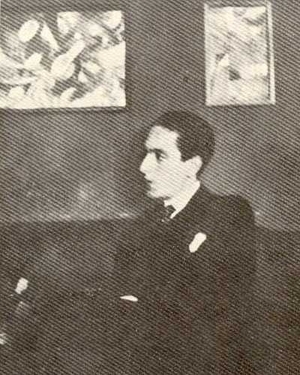
Sur le Dadaïsme. On Dadaism in Italy. Video in French with English subtitles.
John Heartfield
Video by Ovation TV on YouTube
Hannah Höch
Video by artpopulus on YouTube
A small homage to the brilliantly sharp witted German Aritist, Hannah Hoch who left us some of the best Photomontage images ever made.
by xyzllii February 26 2013
Richard Huelsenbeck (1892-1974)
Phantastische Gebeté, 1916 (4.07)
Rec: New York, 1967 (UbuWeb Sound)
 Man Ray Man Ray
A documentary film in 7 parts on Man Ray and Duchamp by Jean-Paul Fargier. Exceptional
insights not only on Man Ray, but on Dada and surrealism too.
Man Ray and the Cinéma Pur: Four Surrealist Films From the 1920s
in Film | April 30th, 2012
Man Ray was one of the leading artists of the avant garde of 1920s and 1930s Paris. A key figure in the Dada and Surrealist movements, his works spanned various media, including film. He was a leading exponent of the Cinéma Pur, or "Pure Cinema", which rejected such "bourgeois" conceits as character, setting and plot. Today we present Man Ray's four influential films of the 1920s.
Le Retour à la Raison, Emak-Bakia, L'Etoile de Mer and Les Mystères du Château de Dé on YouTube.
L'Etoile de mer (The Sea Star) (1928)
With English subtitles and background music by Josephine Baker.
Le Retour à la Raison (1923) on Vimeo
"Acquiring a roll of a hundred feet of film, I went into my darkroom and cut up the material into short lengths, pinning them down on the worktable. On some strips I sprinkled salt and pepper, like a cook preparing a roast, on other strips I threw pins and thumbtacks at random; then I turned on the white light for a second or two, as I had done for my still Rayographs. Then I carefully lifted the film off the table, shaking off the debris, and developed it in my tanks. The next morning, when dry, I examined the work; the salt, pins and tacks were perfectly reproduced."
Man Ray described the process of creating Retour in his Self-Portrait.
Bolero by Ravel illustrated by Man Ray
Pure delight video.
Emak Bakia (Leave Me Alone -1926) Video
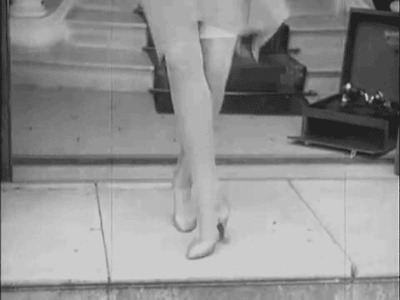
Emak Bakia. Film 35 mm, black and white. Length 7 minutes. Director: Man Ray. Cast: Rose Wheeler, Kiki and Jacques Rigaut. 1926.
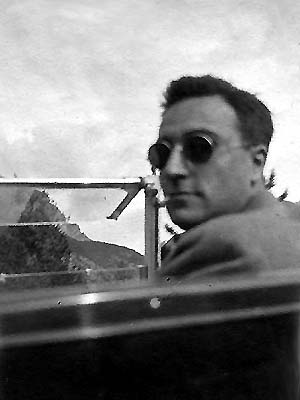
Jacques Rigaut
Man Ray, Unconcerned But Not Indifferent - Video by art-in-tv.
Clip from the European exhibition tour; curator John Jacob at Martin-Gropius-Bau, Berlin.
Unconcerned But Not Indifferent follows the chronology of Man Ray's four working periods geographically: New York, Paris, Los Angeles, Paris. Alongside examples of Man Ray's most important works, the exhibition presents a selection of little-known works, preparatory sketches, documentation of finished pieces, as well as personal documents and objects that belonged to the artist. By placing his artwork in relation to the objects and images from which he drew inspiration, the exhibition creates a distinctive context for the experience and appreciation of Man Ray's extraordinarily wide-ranging creative production.
Les Mystères du Château du Dé (1929)
For the synopsis, see Wikipedia.
Hans Richter
Dreams that Money Can Buy
The plot:
Joe/Narcissus (Jack Bittner) is an ordinary man who has recently signed a complicated lease on a room. As he wonders how to pay the rent, he discovers that he can see the contents of his mind unfolding whilst looking into his eyes in the mirror. He realises that he can apply his gift to others ("If you can look inside yourself, you can look inside anyone!"), and sets up a business in his room, selling tailor-made dreams to a variety of frustrated and neurotic clients. Each of the seven surreal dream sequences in the diegesis is in fact the creation of a contemporary avant-garde and/or surrealist artist, as follows:
Desire - Max Ernst (Director/Writer)
The Girl with the Prefabricated Heart - Fernand Léger (Director/Writer)
Ruth, Roses and Revolvers - Man Ray (Director/Writer)
Discs - Marcel Duchamp (Writer)
Ballet - Alexander Calder (Director/Writer)
Circus - Alexander Calder (Writer)
Narcissus - Hans Richter (Director/Writer)
The Girl with the Prefabricated Heart from Dreams That Money Can Buy.
Ghosts before breakfast
A silent movie from 1927 by Hans Richter. Music by Nikolai von Sallwitz. Shown and performed at 'Cine-Concerts' Hamburg 2008.
Erik Satie
The Gnossienne no. 1 and other Satie compositions.
Erik Satie : Dada Works & Entr'actes
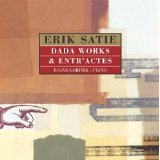
Bojan Gorisek (Piano)
CD audio (16 janvier 2007)
Label: LTM
ASIN : B000JJRVSQ
25,77 euros
An enthusiastic Dada activist in Paris between 1920 and 1924, Satie collaborated extensively with Tristan Tzara, Man Ray, Pablo Picasso and Jean Cocteau, wrote often in Francis Picabia's journal 391, and was a sworn enemy of the proto-Surrealist faction lead by Andre Breton. According to Man Ray, Satie was "the only composer who had eyes." All of Satie's principle Dada-related works are included on this unique 70 minute CD, including: Trois morceaux en forme de poire, performed by Satie in July 1923 at Tzara's notorious Soirée du Coeur à barbe, at which fighting broke out between Tzara's supporters and the proto-Surrealist faction; Ragtime Dada, an extract from the ballet Parade performed at a series of Dada soirees by Kurt Schwitters in 1922; Entr'acte and Cinéma, both scores for Picabia's multi-media 'instantaneist' ballet Relâche performed in 1924. Cinéma was Satie's custom score for the celebrated intermission film by René Clair, while for their curtain call Satie and Picabia drove onstage in a tiny car, resplendent in jewels and furs, the whole production amounting to a dazzling act of anti-art provocation. Both are Satie's arrangements for solo piano. All pieces are performed on piano by Bojan Gorisek, and the booklet includes archive images and detailed historical notes by James Hayward.
Philippe Soupault
Interview - 1959 (UbuWeb Sound)
Tristan Tzara (1896-1963)
(UbuWeb Sound)
1. Pour Compte (6.02), from Phases, 1949
2. L'Amiral cherche une maison à louer
(Tristan Tzara, Marcel Janco, Richard Hulsenbeck)
3. Dada Into Surrealism (1959)
Voices Of Dada is another in LTM's acclaimed series of archive audio CDs exploring twentieth century avantgarde and modernist art. The CD features interviews and phonetic poetry by six key figures of the celebrated Dada movement (1916-1923), as follows:
MARCEL DUCHAMP: two extended interviews with the master theorist recorded in 1959, and a reading from A l'infinitif (1967);
TRISTAN TZARA: a 1948 recording of his poem "Pour compte";
KURT SCHWITTERS: recordings from 1932 of his best known phonetic poems, "Die Sonata in Urlauten" and "Anna Blume";
RICHARD HUELSENBECK: an extended interview from 1959, plus a reading from Phantastiche Gebete (Fantastic Prayers), 1967;
RAOUL HAUSMANN: three phonetic poems written in 1918 and recorded in 1956, plus a colourful interview from 1959;
HANS ARP: a rare 1961 recording of Dada-sprüche.
1. Antonio Russolo: Corale and Serenata, 1921
2. Hugo Ball: Karawane, 1916: Wolken, 1916: Katzen und Pfauen, 1916: Totenklage, 1916: Gadji beri bimba, 1916: Seepferdchen und Flugfische, 1916
3. Arthur Honegger: Pacific 231, 1923
4. Tristan Tzara / Marcel Janco / Richard Huelsenbeck: L'amiral cherche une maison a louer, 1916
5. Kurt Schwitters: Simultangedicht kaa gee dee, 1919: WW, 1922: boo, 1926: naa, 1926: bii bull ree, 1936: Obervogelsang, 1946: Niesscherzo e Hustenscherzo, 1937: Cigarren, 1921: The real disuda of the nightmare, 1946
6. Raoul Hausmann: Soundrel, 1919
7. Giacomo Balla: Discussione sul futurismo di due critici sudanesi, 1914: Macchina Tipografica, 1914: Paesaggio + Temporale, 1914
8. Luigi Russolo: Verglio di una citta, 1914
| Futurism & Dada reviewed |
LTMCD 2301
Sound collages, tone poems, interviews and music made between 1912 and 1959 by Marcel Duchamp, Kurt Schwitters, Tristan Tzara, Guillaume Apollinaire, Jean Cocteau, Marcel Janco, Richard Huelsenbeck. One hour of playing time.
|
Erik Satie
Vexations |
LTMCD 2389
The extraordinary score for Vexations is just three lines long, yet a complete performance (840 repetitions) may last for between 14 and 28 hours. This radical yet enigmatic work is now recognized as a significant milestone in avant-garde music. This recording lasts only 70 minutes and is performed on piano by Alan Marks.
|
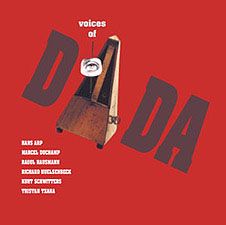 |
LTMCD 2424
Rare interviews and poetry readings by six key Dada anti-artists recorded between 1932 and 1967. All material has been digitally remastered, and the booklet features images and detailed historical notes by James Hayward. Intended as a companion volume to the other LTM releases: "Futurism & Dada Reviewed 1912-1959" and "Surrealism Reviewed", with little content overlap between the three releases - together they give an excellent perspective on the extreme and unusual ideas of that period, and the recordings that document them.
To hear an extract spoken by Tristan Tzara:
|
Erik Satie
Dada Works & Entr'actes |
LTMCD 2474
The first CD collection of Dada-related works by Erik Satie, including scores for Francis Picabia, Tristan Tzara, Kurt Schwitters and René Clair.
§ Trois morceaux en forme de poire
§ Ragtime Dada (from Parade)
§ Entr'acte and Cinéma (from Relâche)
70 minutes, performed on piano by Bojan Gorisek.
|
|







 Man Ray
Man Ray

